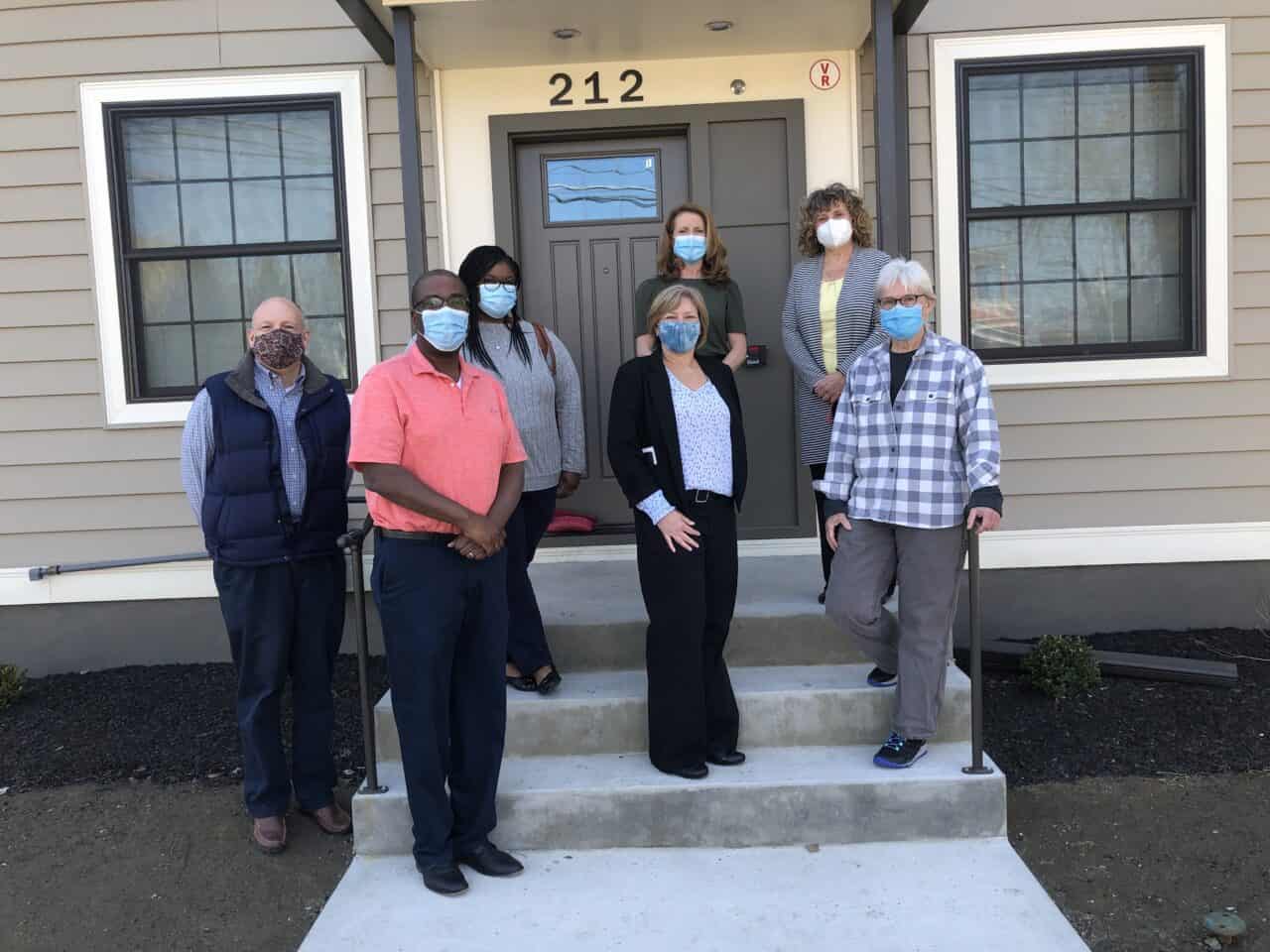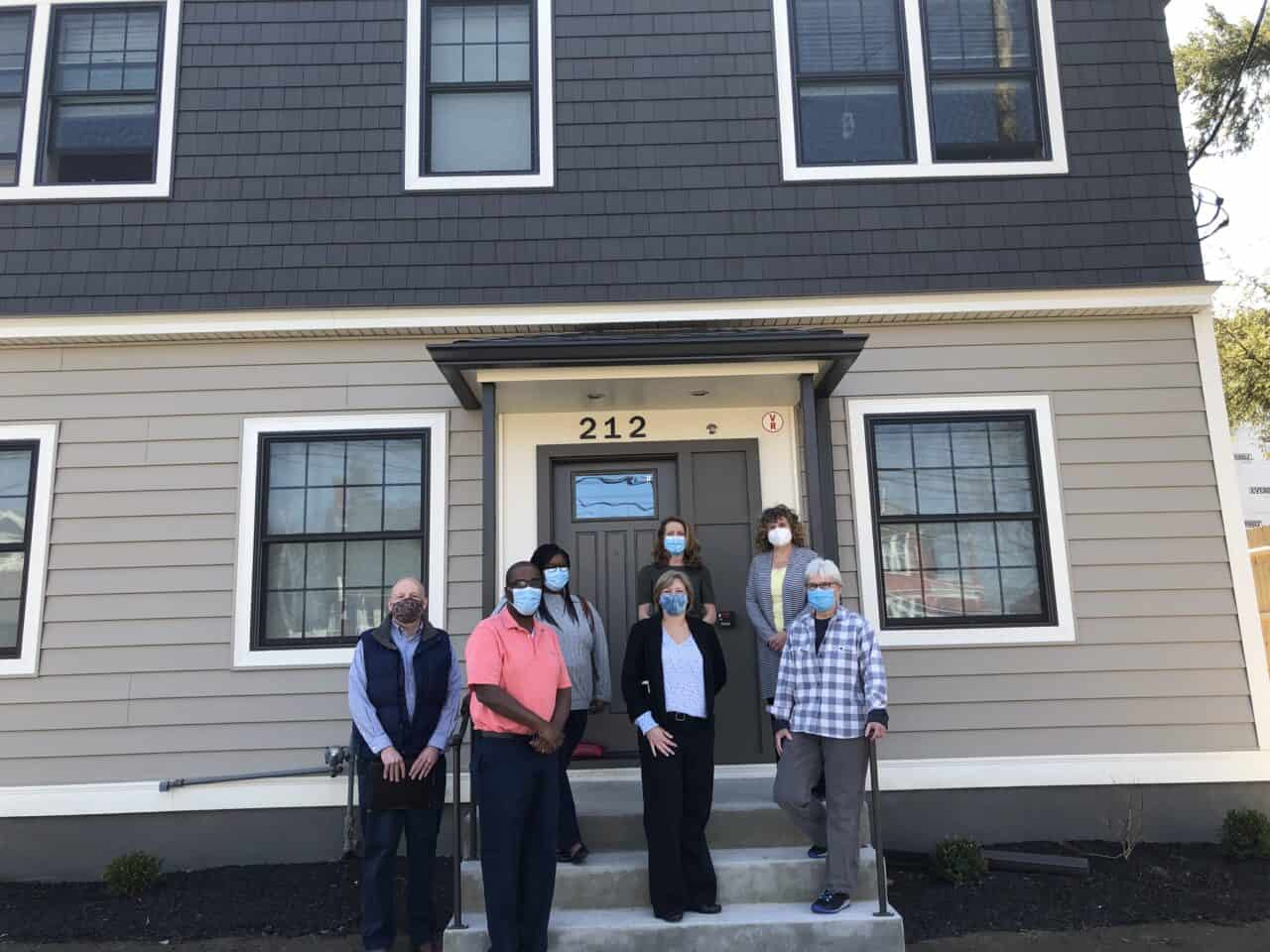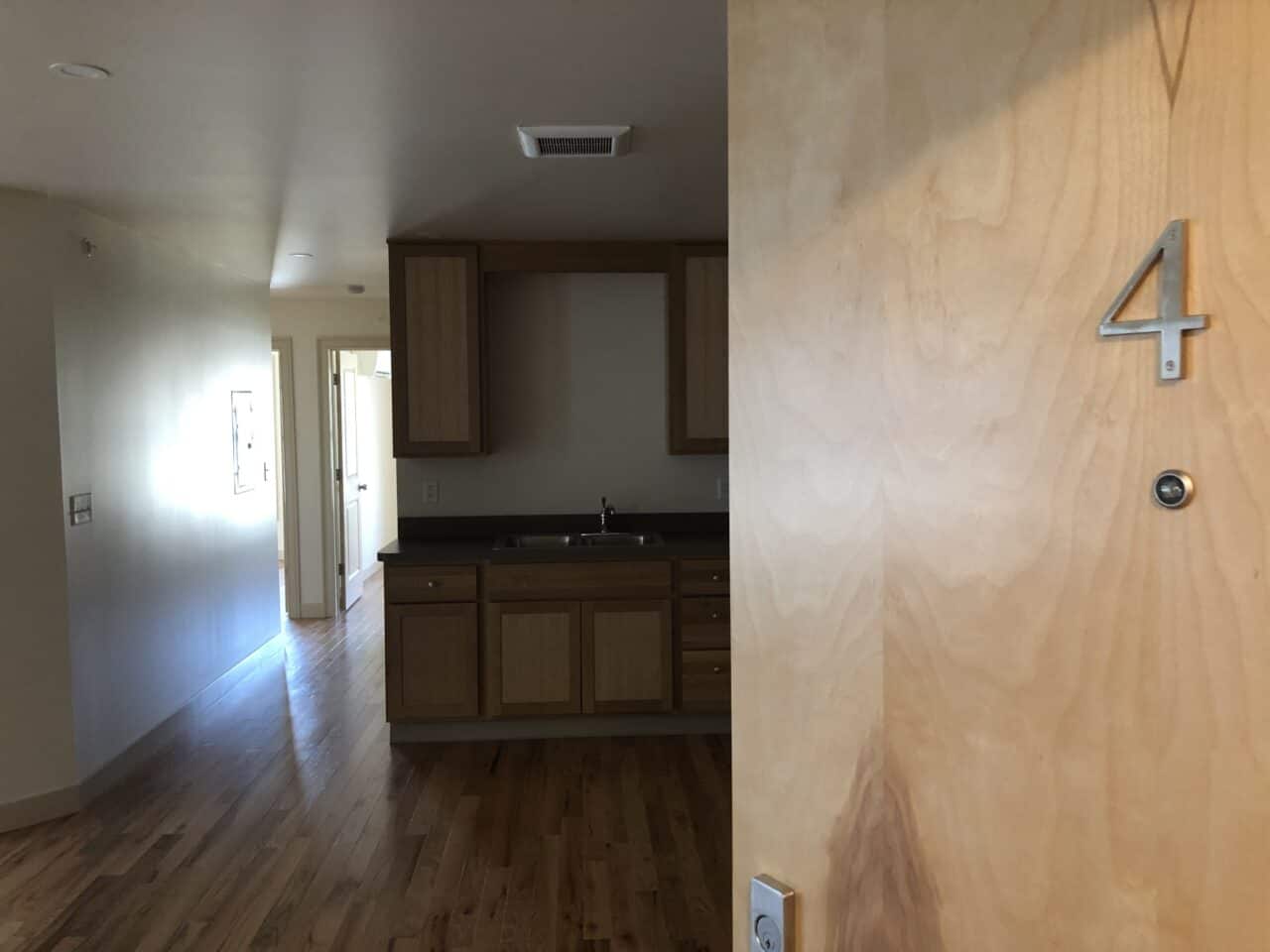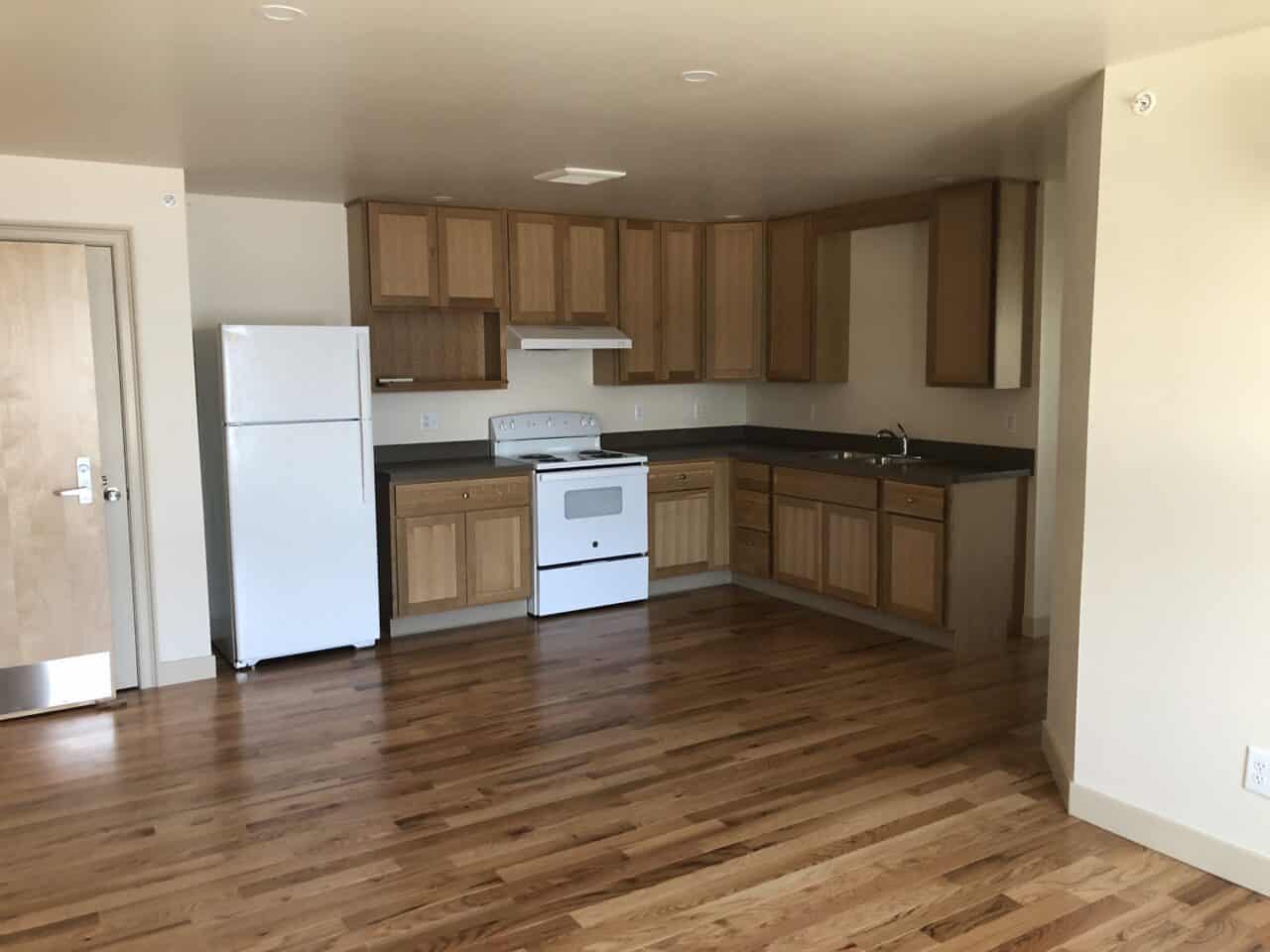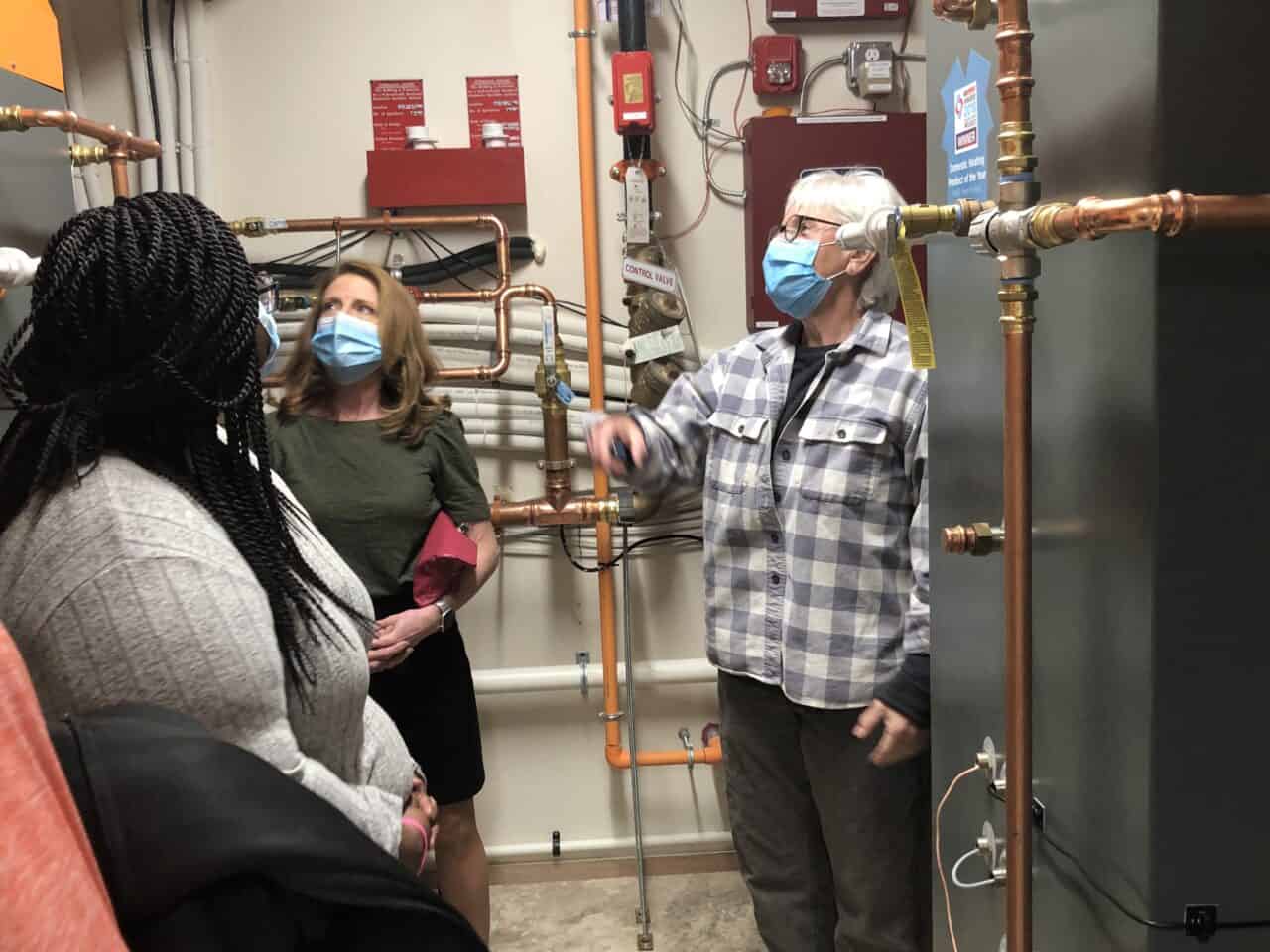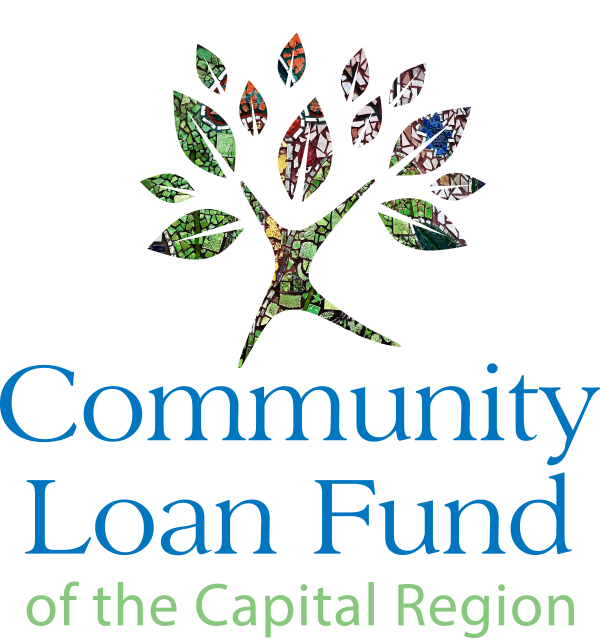Today, we joined staff from St. Paul’s Center and Nancy Kupiec of Vesta Construction Services to tour the Lee Dyer Family Apartments. This project will provide safe, affordable housing to help nine families at a time transition out of homelessness in “housing they can be proud of” states Tracy Pitcher, Executive Director of St. Paul’s Center.
Affordable housing stock in Rensselaer County has been dwindling and persons living in poverty are either getting pushed out of the market or are relegated to living in substandard housing in unsafe neighborhoods. St. Paul’s Center has been providing shelter for homeless mothers and their children since 2006, when St. Paul’s Lutheran Church merged with St. Timothy’s and left an empty church available. Church leaders canvassed the community to determine the best use, and found that the greatest need was for shelter beds for women and their children.
They turned the newly empty church into a 19-bed facility that could help provide emergency assistance to women and children. They also founded a rapid-rehousing program to help families get back into permanent housing and scattered-site supportive housing; the program included financial assistance and case management. The Dyer complex enhances program offerings even further, by providing single-site housing and support services to those who face the most complex challenges.
Support services will also be targeted toward the children and teens in the family which will increase the likelihood that they will complete school and either continue with their education or obtain employment. Children and teens who face homelessness are much more likely to be homeless themselves as adults. The housing and support services will help stop this cycle. The average tenancy in a permanent supportive housing program is 3-7 years.
To assist with the project, the Community Loan Fund made a $192,000 term loan to the center in 2017 in order to purchase the property at 212 Washington Avenue in Rensselaer. Then, the organization made a $100,000 non-revolving line of credit to provide bridge financing for renovations to the building.
The property was transformed from a 4-unit apartment building with 1-3 bedrooms into a 4-unit building with 2- and 3-bedroom units to accommodate homeless women and their children along with the on-site property manager. The building is next door to another St. Paul’s Center affordable housing project, which includes an additional 6 units. Both buildings were constructed to be energy efficient, and take advantage of solar panels and other green tech that lowers the energy bills to sustainable levels.

